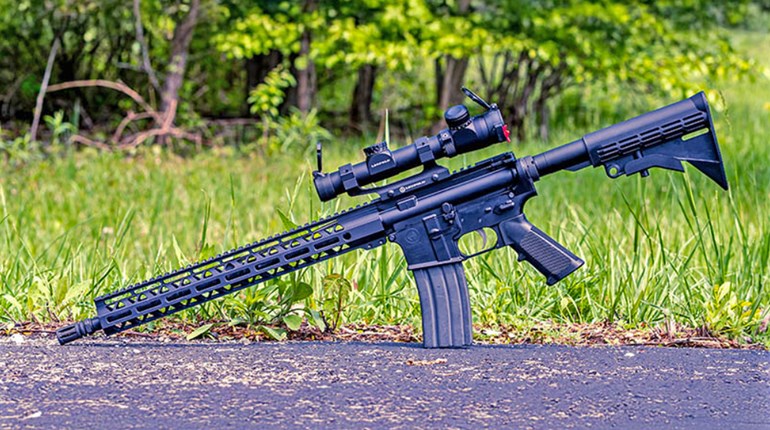** When you buy products through the links on our site, we may earn a commission that supports NRA's mission to protect, preserve and defend the Second Amendment. **
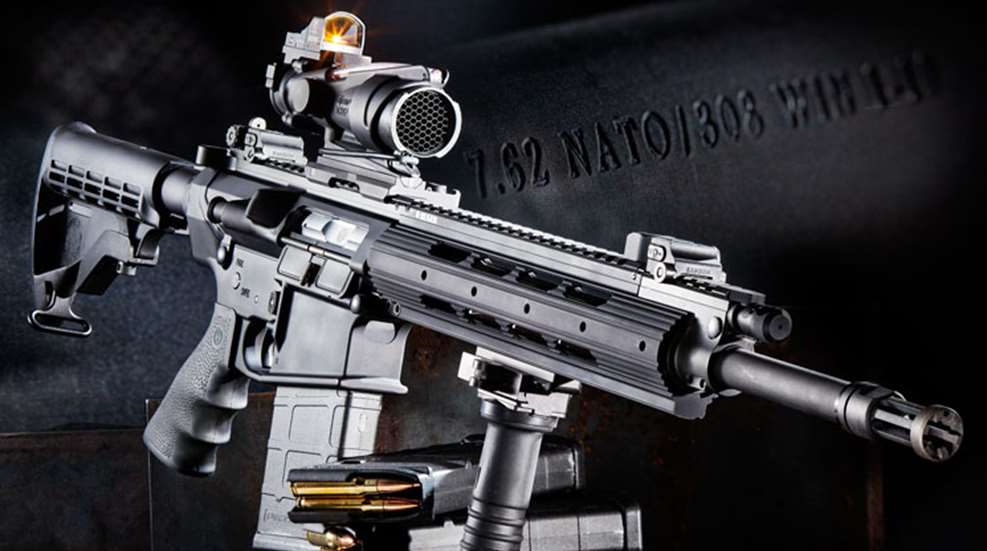
Who would have thought a rifle designed by a home-workshop engineer, created by an aerospace company with plastic and aluminum parts, turned down by the Army and re-invented in a new caliber could have endured for more than 50 years as America’s most popular rifle? In the late 1950s, the U.S. Army was looking for a new rifle. ArmaLite, a division of the Fairchild aviation company, hoped hiring young engineer Eugene Stoner and developing his prototype rifle design would result in a military contract. Stoner liked .30-caliber rifles, so the rifle that became the AR-10 was chambered in 7.62 NATO/.308 Win. This made sense from a procurement standpoint, because the Army’s M14 rifle was chambered in 7.62 NATO as well. But the Army threw ArmaLite a curve and said it wanted a smaller, lighter version of the rifle in a different chambering—maybe a high-velocity .22 caliber. Stoner’s team set to work downsizing the AR-10 and created a new rifle cartridge for it. The AR-15 and the 5.56 NATO/.223 Rem. cartridges were born, while the AR-10 faded into the background.
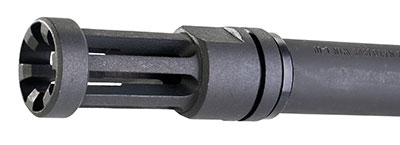 About four years ago, Ruger introduced the SR-556, a 5.56 NATO, gas-piston-operated version of the AR-15. You might wonder why the company would want to enter a very crowded field to produce AR-style rifles, especially since Ruger was already selling every gun it made. But, Ruger listens to its customers and builds the firearms they want—the company calls it “Voice of the Customer”—with the understanding that new products drive growth. When Ruger’s customers said they wanted a modern, reliable AR-pattern rifle, that’s what they got. Whereas Armalite downsized the AR-10 to create the AR-15, Ruger started with the SR-556 and upsized it to create the SR-762. Think of the SR-762 as an SR-556 on steroids.
About four years ago, Ruger introduced the SR-556, a 5.56 NATO, gas-piston-operated version of the AR-15. You might wonder why the company would want to enter a very crowded field to produce AR-style rifles, especially since Ruger was already selling every gun it made. But, Ruger listens to its customers and builds the firearms they want—the company calls it “Voice of the Customer”—with the understanding that new products drive growth. When Ruger’s customers said they wanted a modern, reliable AR-pattern rifle, that’s what they got. Whereas Armalite downsized the AR-10 to create the AR-15, Ruger started with the SR-556 and upsized it to create the SR-762. Think of the SR-762 as an SR-556 on steroids.
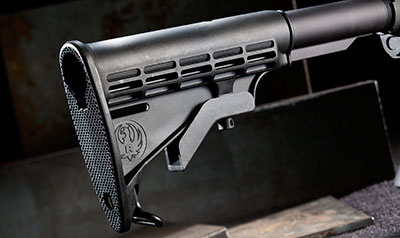 Both Ruger ARs use gas-piston operation as opposed to the traditional direct-gas-impingement of Stoner’s AR-10. What does this mean? Basically, Stoner vented gas from the barrel to cycle the action of his rifle. Using a long tube, gas is directed to a bolt carrier that acts like a big piston through the cycle of operation. This works fine, but the system has been criticized for blowing hot gas, crud, corruption and un-American influences back into the rifle’s action. The action gets hot and dirty, and some feel it makes the rifle less reliable. I think it works pretty well, but the engineers at Ruger are doubtless smarter than I am. They designed a two-stage piston, where gas from the barrel is apportioned by a regulator and used to move the piston. The piston strikes a transfer rod that travels rearward to strike the bolt carrier, moving it to cycle the action.
Both Ruger ARs use gas-piston operation as opposed to the traditional direct-gas-impingement of Stoner’s AR-10. What does this mean? Basically, Stoner vented gas from the barrel to cycle the action of his rifle. Using a long tube, gas is directed to a bolt carrier that acts like a big piston through the cycle of operation. This works fine, but the system has been criticized for blowing hot gas, crud, corruption and un-American influences back into the rifle’s action. The action gets hot and dirty, and some feel it makes the rifle less reliable. I think it works pretty well, but the engineers at Ruger are doubtless smarter than I am. They designed a two-stage piston, where gas from the barrel is apportioned by a regulator and used to move the piston. The piston strikes a transfer rod that travels rearward to strike the bolt carrier, moving it to cycle the action.
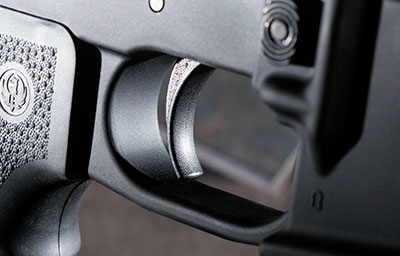 I asked Ruger Product Manager and engineer Mark Gurney how the two-stage piston works, and he explained it to me like this: If you look at the chrome-plated Ruger piston, it has a stepped top that fits into the gas regulator. When gas is vented from the barrel and through one of the ports in the gas regulator, the high-pressure gas starts the piston moving. Gas pressure drops as the bullet leaves the barrel, and the two-stage design of the piston spreads this movement out over a longer time. In effect, it pushes on the smaller diameter of the piston first, followed by the entire piston, to soften the force and slow the action down. The piston design keeps hot gas out of the action, reducing heat and the buildup of the aforementioned crud. It also makes the rifle run more reliably with a wider variety of ammunition. Guns that run hot and fast have a reduced service life; the SR-762 runs cooler and slower. Ruger must have gotten this right, as Gurney told me of an SR-762 at the factory that has gone 20,000 rounds without a failure.
I asked Ruger Product Manager and engineer Mark Gurney how the two-stage piston works, and he explained it to me like this: If you look at the chrome-plated Ruger piston, it has a stepped top that fits into the gas regulator. When gas is vented from the barrel and through one of the ports in the gas regulator, the high-pressure gas starts the piston moving. Gas pressure drops as the bullet leaves the barrel, and the two-stage design of the piston spreads this movement out over a longer time. In effect, it pushes on the smaller diameter of the piston first, followed by the entire piston, to soften the force and slow the action down. The piston design keeps hot gas out of the action, reducing heat and the buildup of the aforementioned crud. It also makes the rifle run more reliably with a wider variety of ammunition. Guns that run hot and fast have a reduced service life; the SR-762 runs cooler and slower. Ruger must have gotten this right, as Gurney told me of an SR-762 at the factory that has gone 20,000 rounds without a failure.
Weighing in at 8.6 pounds and hitting shelves with a suggested retail price of $2,195, the Ruger SR-762 is right in the middle of the pack for heft and cost when compared to other AR-type rifles chambered in 7.62 NATO. The 16.12-inch barrel is hammer-forged, chrome-lined and fluted to reduce weight. It is threaded with the usual 5⁄8x24 threads should you wish to unscrew the Mini-14-style flash hider and replace it with a muzzle brake or a sound suppressor.
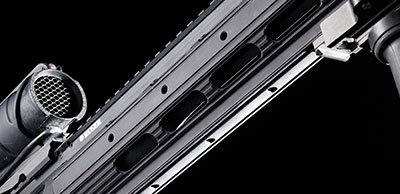 The rifle is a flattop design with a full-length Picatinny rail for mounting optics and accessories like lights, lasers and night-vision devices. For those who demand solid backup sights, the SR-762 comes with a set of removable, fold-down, adjustable iron sights. The fore-end is a departure from the quad-rail design seen on the first SR-556. Called a Lightweight Adaptive Handguard, it’s smooth and doesn’t tear up my delicate hands like some of the sharper, railed furniture on other ARs. It’s drilled and tapped, so various appurtenances can be attached. Two sections of rail and three finger-groove handguard covers—as well as the screws to attach them in the positions of your choice—are included.
The rifle is a flattop design with a full-length Picatinny rail for mounting optics and accessories like lights, lasers and night-vision devices. For those who demand solid backup sights, the SR-762 comes with a set of removable, fold-down, adjustable iron sights. The fore-end is a departure from the quad-rail design seen on the first SR-556. Called a Lightweight Adaptive Handguard, it’s smooth and doesn’t tear up my delicate hands like some of the sharper, railed furniture on other ARs. It’s drilled and tapped, so various appurtenances can be attached. Two sections of rail and three finger-groove handguard covers—as well as the screws to attach them in the positions of your choice—are included.
A four-position gas regulator controls the flow of gas, with settings from 0 to 3. Out of the box, the rifle comes set in the default position of 2, and unless you’re using a sound suppressor or having trouble getting the rifle to run with a particular brand of ammunition, it’s probably best to leave it there. The 0 setting cuts off the gas and turns the rifle into a single-shot that has to be manually cycled. Setting 1 gives you less gas for use with suppressors, and 3 is the setting you might need if the rifle won’t cycle properly. Keep in mind, more isn’t necessarily better, and “over-gassing” the rifle—shooting it with more gas than needed to dependably cycle the action—beats it up and makes it kick harder.
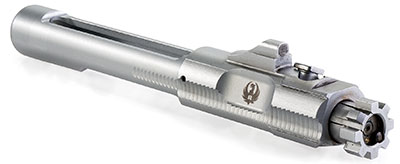 A lot of users end up changing the U.S. GI-style pistol grips included on many ARs, so Ruger included a soft rubber Hogue grip on the SR-762. The stock is a standard, six-position-adjustable unit with a sling swivel, but no forward sling swivel is present. Although the buffer tube is about 5⁄8-inch longer than the buffer tube on the SR-556, the tube diameter of the SR-762 is the same, so most replacement AR stocks can be installed on either rifle. The SR-762 ships with three, 20-round Magpul PMag magazines. As everyone who has used them knows, Magpul magazines are top shelf. But herein lies a small problem: The PMags shipped with the gun are second-generation magazines that Magpul no longer makes. Although Ruger says it has plenty on hand to ship with rifles, you won’t find these magazines for sale. By the time you read this Magpul should have a new Gen 3 magazine for sale, and it will work just fine in the SR-762.
A lot of users end up changing the U.S. GI-style pistol grips included on many ARs, so Ruger included a soft rubber Hogue grip on the SR-762. The stock is a standard, six-position-adjustable unit with a sling swivel, but no forward sling swivel is present. Although the buffer tube is about 5⁄8-inch longer than the buffer tube on the SR-556, the tube diameter of the SR-762 is the same, so most replacement AR stocks can be installed on either rifle. The SR-762 ships with three, 20-round Magpul PMag magazines. As everyone who has used them knows, Magpul magazines are top shelf. But herein lies a small problem: The PMags shipped with the gun are second-generation magazines that Magpul no longer makes. Although Ruger says it has plenty on hand to ship with rifles, you won’t find these magazines for sale. By the time you read this Magpul should have a new Gen 3 magazine for sale, and it will work just fine in the SR-762.
Checking the Brownells catalog, I found two magazines I thought might work in the gun, a Mag-Tech 20-round steel magazine and a DPMS steel magazine with a plastic follower that, oddly, holds 19 rounds. I tested both in the SR-762, and they fit and functioned flawlessly. It seems most any .308 Win. AR magazine will work with this Ruger.
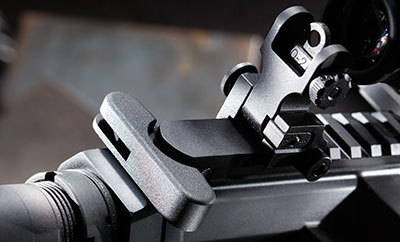 I learned some things about the SR-762 during range testing. To begin with, I experienced a few instances where the action didn’t cycle fully, including after the very first round I fired. After about 30 rounds, these malfunctions stopped—I didn’t keep track of exactly when—leading me to believe the big Ruger runs best after a short break-in period. The only other malfunctions I experienced involved a couple of primers coming out of cases upon firing, falling down into the action and tying up the rifle. This is a common problem with many ARs, and it is entirely ammunition-related. I only experienced it with one of the brands I tried, so I stopped using it and didn’t experience the problem with any other load through an additional 500 rounds. Always test any ammunition you’re going to depend upon for self-defense.
I learned some things about the SR-762 during range testing. To begin with, I experienced a few instances where the action didn’t cycle fully, including after the very first round I fired. After about 30 rounds, these malfunctions stopped—I didn’t keep track of exactly when—leading me to believe the big Ruger runs best after a short break-in period. The only other malfunctions I experienced involved a couple of primers coming out of cases upon firing, falling down into the action and tying up the rifle. This is a common problem with many ARs, and it is entirely ammunition-related. I only experienced it with one of the brands I tried, so I stopped using it and didn’t experience the problem with any other load through an additional 500 rounds. Always test any ammunition you’re going to depend upon for self-defense.
With a Burris 1.5-6x40 mm XTR scope and the company’s AR-P.E.P.R. (Proper Eye Position Ready) mount installed, weight is brought up to 10.3 pounds. Adding a loaded 20-round magazine brings the weight up to 11.4 pounds. If you’re used to humping a 5.56 NATO carbine, you’re going to think the SR-762 is heavy, but if battle rifles are your thing, you’re going to find the weight to be familiar and acceptable.
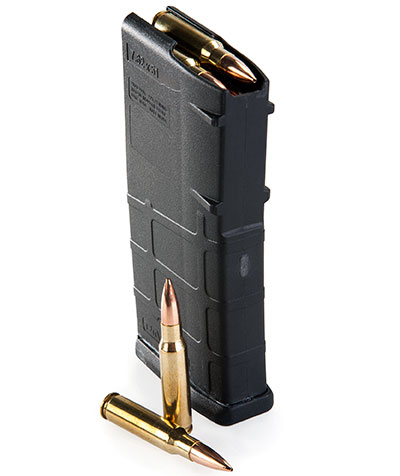 With its hard-plastic butt, this rifle hits my shoulder harder than a 7-pound bolt-action .308 Win. rifle with a recoil pad. It doesn’t bother me when shooting offhand, but I have to tell you, it got a little old when shooting from the bench. On the other hand, the design causes recoil to come straight back, so there is very little muzzle rise and it’s easy to watch hits through the scope.
With its hard-plastic butt, this rifle hits my shoulder harder than a 7-pound bolt-action .308 Win. rifle with a recoil pad. It doesn’t bother me when shooting offhand, but I have to tell you, it got a little old when shooting from the bench. On the other hand, the design causes recoil to come straight back, so there is very little muzzle rise and it’s easy to watch hits through the scope.
Like the SR-556, the SR-762 uses a military-grade trigger system. This promotes reliability and durability, and is OK for quick shots at short range, but the 8.5-pound, gritty, creepy trigger doesn’t lend itself to precision shooting. Still, you have to ask yourself if that’s the primary role of a 7.62 NATO semi-automatic carbine with 20-round capacity. I prefer a better trigger, and fortunately any of the replacement or drop-in triggers that work in a standard ARs will also work in the SR-762. I have been using a Timney drop-in trigger in the SR-556 for a couple of years with complete satisfaction. It gets the trigger pull down to a crisp 3.5 pounds, is easy to install and I plan to put one in the SR-762.
I would say you could realistically expect to get about 1.5-inch accuracy for five-shot groups fired at 100 yards with this rifle. My average during accuracy testing for all groups was 1.506 inches. My smallest group, with Federal Match, was .64 inch, and my largest, with Federal American Eagle, was 2.23 inches. I did all of my accuracy testing 25 rounds at a time—I ran the rifle hot, the way a battle rifle should run, and didn’t take the time to cool it in the hopes of improving accuracy. In the end, it did just fine. I’ve been waiting for a modern AR-10 to come my way. From Stoner’s original rifle through all the variations and experimentation with different calibers over the years, the .308 Win. has quietly waited. It never really went away, but I think it’s coming back strong in the AR platform as evidenced by a number of new models in the chambering. From casual shooters to hunters or those wanting a 7.62 NATO battle rifle, the SR-762 is good to go.

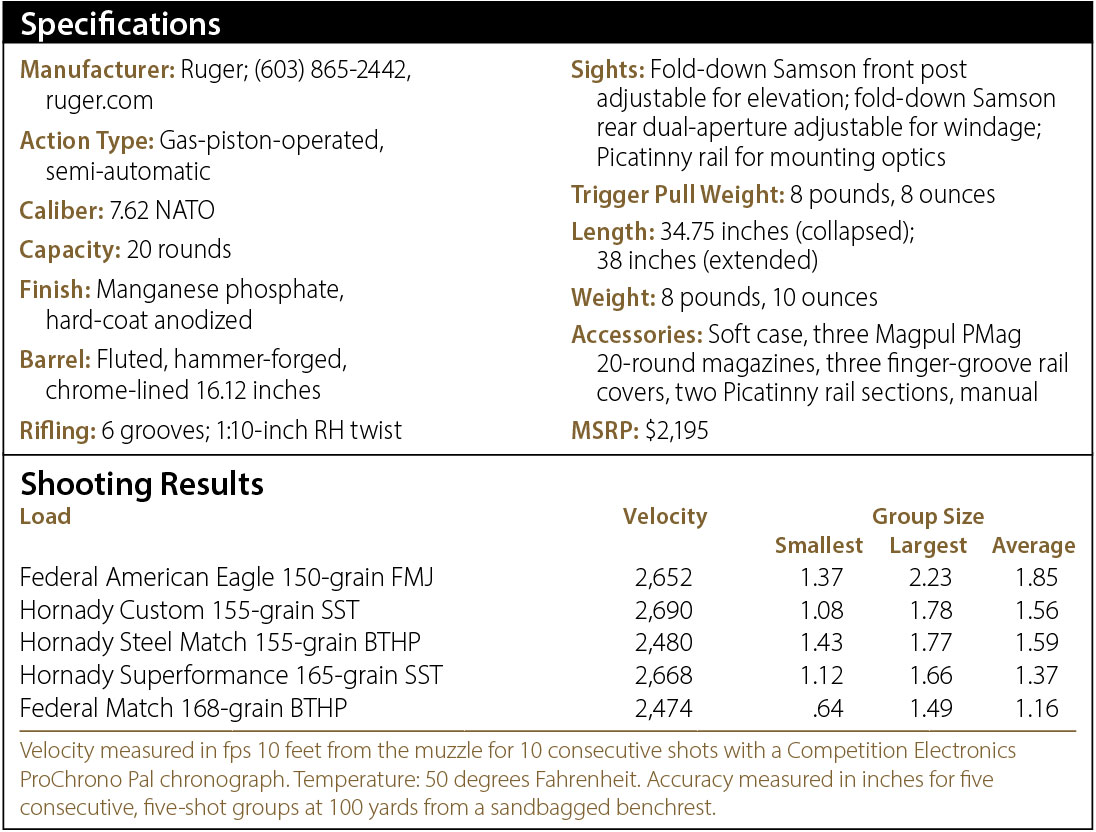

A flash hider similar to the model found on Ruger’s Mini-14 tops the muzzle and can easily be changed for a muzzle brake or sound suppressor.

A CAR-style six-position adjustable stock allows the SR-762 to be fitted to a variety of shooters.

The military-grade trigger is reliable and durable, but the gritty feel and generous amount of creep will leave shooters who seek greater precision wanting an upgrade.
Weighing in at 8.6 pounds and hitting shelves with a suggested retail price of $2,195, the Ruger SR-762 is right in the middle of the pack for heft and cost when compared to other AR-type rifles chambered in 7.62 NATO. The 16.12-inch barrel is hammer-forged, chrome-lined and fluted to reduce weight. It is threaded with the usual 5⁄8x24 threads should you wish to unscrew the Mini-14-style flash hider and replace it with a muzzle brake or a sound suppressor.

A Picatinny rail graces the aluminum handguard at the 12 o’clock position. The three-, six- and nine-o’clock positions of the fore-end are drilled for adding the two included rail sections.
A four-position gas regulator controls the flow of gas, with settings from 0 to 3. Out of the box, the rifle comes set in the default position of 2, and unless you’re using a sound suppressor or having trouble getting the rifle to run with a particular brand of ammunition, it’s probably best to leave it there. The 0 setting cuts off the gas and turns the rifle into a single-shot that has to be manually cycled. Setting 1 gives you less gas for use with suppressors, and 3 is the setting you might need if the rifle won’t cycle properly. Keep in mind, more isn’t necessarily better, and “over-gassing” the rifle—shooting it with more gas than needed to dependably cycle the action—beats it up and makes it kick harder.

Replete with the Ruger phoenix, the bolt is chrome-plated, as is the one-piece bolt carrier, which features an oversize, radiused rear bearing surface.
Checking the Brownells catalog, I found two magazines I thought might work in the gun, a Mag-Tech 20-round steel magazine and a DPMS steel magazine with a plastic follower that, oddly, holds 19 rounds. I tested both in the SR-762, and they fit and functioned flawlessly. It seems most any .308 Win. AR magazine will work with this Ruger.

The standard charging handle is fine for use with iron sights or a red-dot, but the rear ocular bell of a varible-power optic may impede quick access to this control.
With a Burris 1.5-6x40 mm XTR scope and the company’s AR-P.E.P.R. (Proper Eye Position Ready) mount installed, weight is brought up to 10.3 pounds. Adding a loaded 20-round magazine brings the weight up to 11.4 pounds. If you’re used to humping a 5.56 NATO carbine, you’re going to think the SR-762 is heavy, but if battle rifles are your thing, you’re going to find the weight to be familiar and acceptable.

A Magul PMag loaded with 20 rounds of .308 Win. helps the SR-762 carry fight-stopping power at long or short ranges.
Like the SR-556, the SR-762 uses a military-grade trigger system. This promotes reliability and durability, and is OK for quick shots at short range, but the 8.5-pound, gritty, creepy trigger doesn’t lend itself to precision shooting. Still, you have to ask yourself if that’s the primary role of a 7.62 NATO semi-automatic carbine with 20-round capacity. I prefer a better trigger, and fortunately any of the replacement or drop-in triggers that work in a standard ARs will also work in the SR-762. I have been using a Timney drop-in trigger in the SR-556 for a couple of years with complete satisfaction. It gets the trigger pull down to a crisp 3.5 pounds, is easy to install and I plan to put one in the SR-762.
I would say you could realistically expect to get about 1.5-inch accuracy for five-shot groups fired at 100 yards with this rifle. My average during accuracy testing for all groups was 1.506 inches. My smallest group, with Federal Match, was .64 inch, and my largest, with Federal American Eagle, was 2.23 inches. I did all of my accuracy testing 25 rounds at a time—I ran the rifle hot, the way a battle rifle should run, and didn’t take the time to cool it in the hopes of improving accuracy. In the end, it did just fine. I’ve been waiting for a modern AR-10 to come my way. From Stoner’s original rifle through all the variations and experimentation with different calibers over the years, the .308 Win. has quietly waited. It never really went away, but I think it’s coming back strong in the AR platform as evidenced by a number of new models in the chambering. From casual shooters to hunters or those wanting a 7.62 NATO battle rifle, the SR-762 is good to go.

null

null














